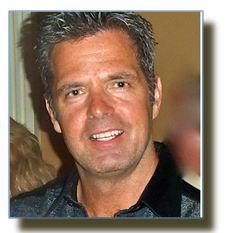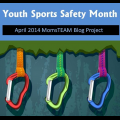In recognition of April as National Youth Sports Safety Month, MomsTeam asked 30 experts to write a blog in 2012 answering two questions: first, how or why did they get into their field, and second, how have they made a difference in the life of a youth athlete in the past year.
Today,
we hear again from Vincent Burke, a physical therapist, and the owner and operator of Infinity Rehabilitation and Sports Medicine and the Infinity
Fitness & Sports Institute in Rochelle Park, New Jersey.
By Vincent M. Burke, PT, DPT, MPT, BS, NASM-CPT
How did I get into my field?
I chose physical therapy for the rewards that come with truly making a difference in the lives of others. After years of persistence and perseverance, I obtained my degrees and realized my life-long dream by opening my own physical therapy practice, along with my wife.
We are a true "family practice" where our patients feel comfortable
and "at home"; a place of caring and
for healing where we provide help for so many in need, all the while teaching our
own children the importance of helping others and caring. To be
in a place where I can make a difference through caring and treating is
the greatest reward.

How have I made a difference in an athlete's life?
The emotional rewards of being a physical therapist are limitless. To have the chance to help an amputee walk again, return an athlete to the field, decrease someone's back pain, help a mother to gain the strength to be able to hold her baby again, are just a few of the examples of the wonderful things that I get to do every day.
But sometimes I can make an even bigger difference.
I was recently working with an otherwise healthy 17-year-old male patient after shoulder surgery. In taking the patient's history, I learned that that he had recently been diagnosed with Exercise-Induced Asthma, for which he was told to use a prescribed inhaler while exercising if he felt short of breath. He had playing sports for a long time, and appeared to be in good cardiovascular shape. He had never felt these asthma-like symptoms before in his life.
Physical therapy raised a number of red flags (see list of symptoms below) which suggested the possibility that he had a serious heart condition called Hypertrophic Cardiomyopathy (HCM), a disease in which the muscles in the wall of the heart become abnormally thick, which causes the heart to have difficulty pumping. While it is not curable, HCM can be treated successfully with medication, an implantable defibrillator, surgery, and/or lifestyle modification. Undetected or untreated, however, HCM can be life-threatening. HCM is frequently asymptomatic until sudden cardiac death.
FIRST RED FLAG:
During rehabilitation, when he started to do conditioning, he became short of breath. He had forgotten to bring his inhaler. He stopped exercising and rested for a short time. His symptoms stopped.
The next time he had therapy and began exertion, he did use his inhaler. While the shortness of breath was somewhat relieved, he did feel chest pressure.
SECOND RED FLAG:
He had a "sunken in chest," called Pectus Exucavatum. Sometimes, having the chest bone press on the heart can mimic the symptoms of HCM.
THIRD RED FLAG:
He had never had an x-ray or CT scan of his chest. Neither he nor his parents were aware that the structure of the rib cage could interfere with the structure and function of the heart.
Based on these red flags, I suggested that he be seen by a cardiologist. In the meantime, all activities were placed on hold.
He was found, after testing, not to have Exercise-Induced Asthma, but was diagnosed with HCM, which could have taken his life at any time while he was participating in sports or strenuous activity (HCM is the leading cause of sudden cardiac death among athletes). The cardiologist confirmed that, if he had continued to be treated for exercise-induced asthma while participating in sports, there was a very high probability he would have died.
What a blessing that he had come into my office and that I recognized from his medical history and symptoms the possibility of HCM and recommended that he follow up with a cardiologist.
So, how have I helped make a difference in an athlete's life? I helped save an athlete from almost certain death. It doesn't get any better than that!
Common signs and symptoms of HCM include:- Dizziness, lightheadedness, or fainting
- Difficulty breathing, especially with exertion
- Swelling in the hands and feet
- Fatigue, irritability
- Pale, cool, sweaty skin
- Dangerous heart rhythms that can cause fainting or cardiac arrest
If your child has any of these symptoms, take him to see a pediatric cardiologist to be evaluated and obtain a definitive diagnosis.
Vincent M. Burke holds a
Bachelor’s Degree in Science, and a Master’s and Doctoral Degree in
Physical Therapy. His specialty is in Orthopedics and Sports Medicine.
He is also a certified Personal Trainer through the National Academy of
Sports Medicine. Vincent is President and Owner of Infinity
Rehabilitation and Sports Medicine, LLC and Infinity Fitness &
Sports Institute, LLC. in Rochelle, New Jersey. Vince can be reached by e-mail is Vince@infitpt.com or Twitter @Vince_Burke.



















